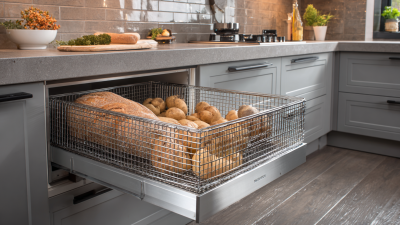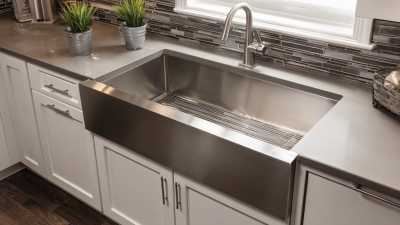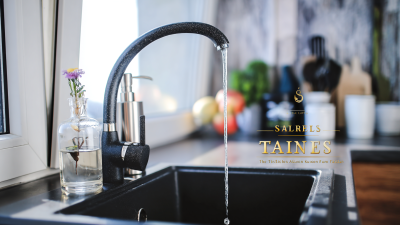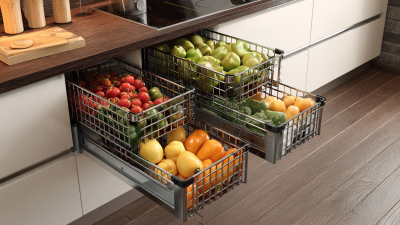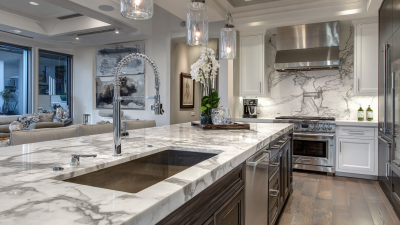When it comes to renovating or building a home, the choice of materials plays a crucial role in both aesthetics and functionality. Stainless steel kitchen and bathroom sinks have quickly become a preferred option for homeowners and designers alike, thanks to their durability, resistance to stains and corrosion, and sleek appearance. According to a recent report by the Home Improvement Research Institute, over 60% of homeowners opt for stainless steel sinks due to their longevity and ease of maintenance. With a variety of sizes, styles, and finishes available, selecting the right stainless steel kitchen and bathroom sinks can significantly enhance the overall design and efficiency of your space. Understanding the essential factors to consider ensures that your investment not only meets your functional needs but also complements your interior décor seamlessly. In this blog, we present 7 essential tips to help you choose the perfect stainless steel sinks for your home.
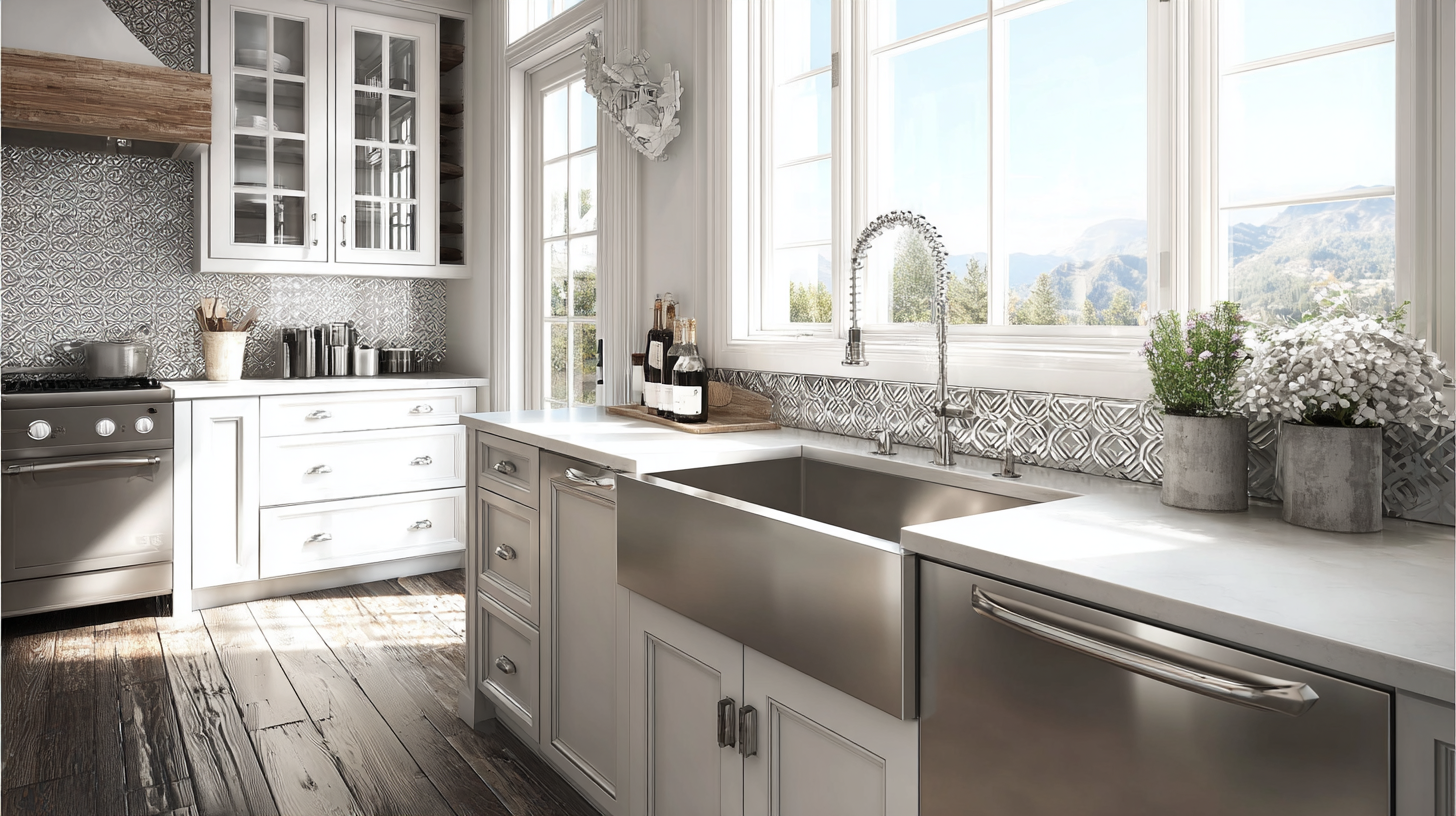
When it comes to selecting the right stainless steel sink for your kitchen or bathroom, understanding the various types available is crucial. Stainless steel sinks come in multiple shapes, sizes, and finishes, each offering unique benefits. For instance, the single-basin sink is ideal for minimalistic spaces, providing ample room for washing large pots and pans. On the other hand, a double-basin sink can enhance multitasking efficiency, allowing you to wash and rinse simultaneously, making it a favorite in busy kitchens.
In addition to configuration, the gauge of stainless steel plays a significant role in durability and aesthetics. A lower gauge number indicates thicker steel, which translates to a more resilient sink capable of standing up to heavy use without denting or scratching easily. Moreover, the finish of the sink, whether brushed or polished, can affect both the look of your space and the ease of maintenance. A brushed finish tends to hide scratches well, while a polished finish offers a sleek, modern appearance but may require more upkeep to maintain its shine. By weighing these options, you can choose a sink that not only complements your decor but also meets your functional needs.
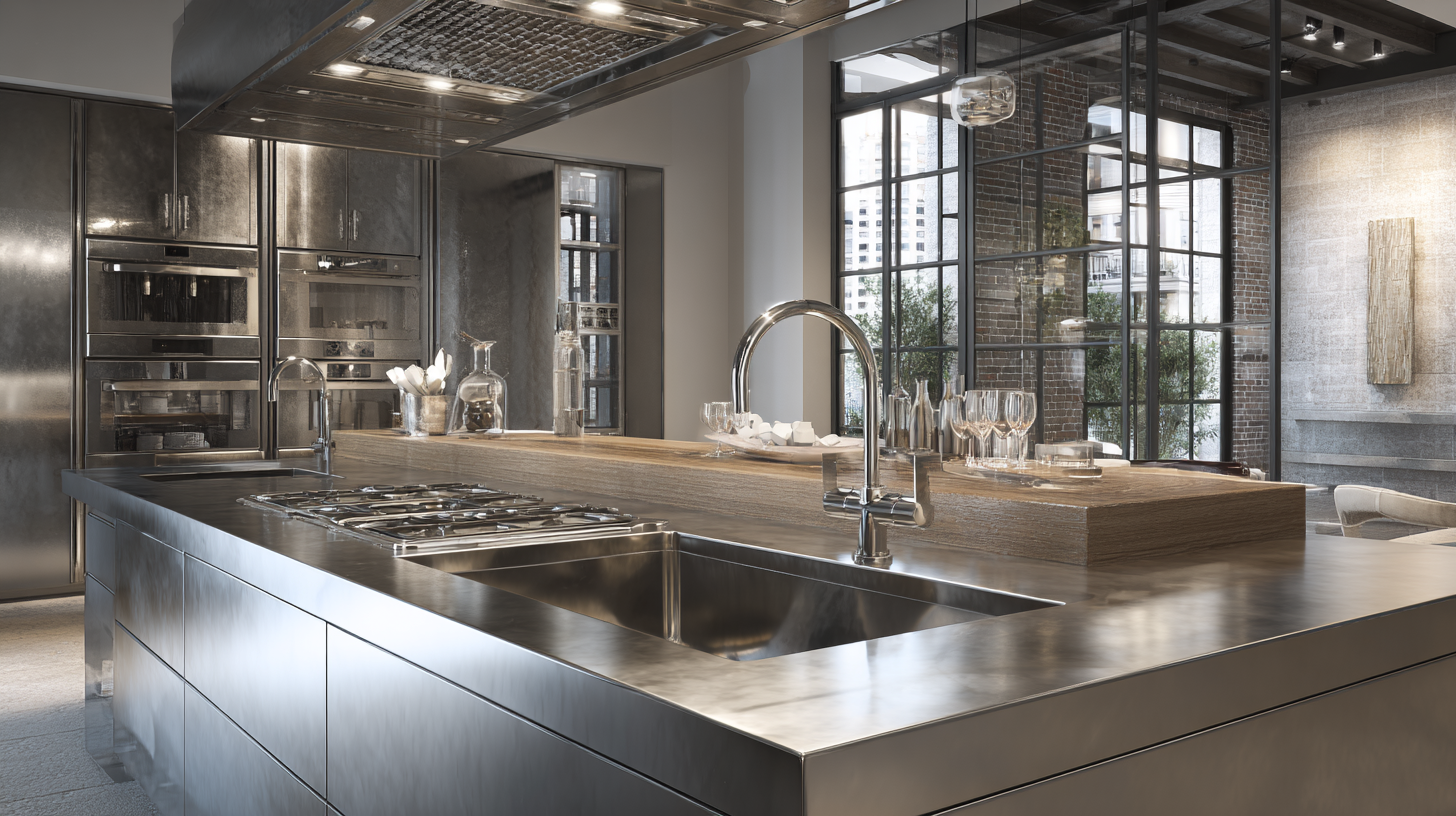
When selecting stainless steel sinks for your kitchen or bathroom, one of the most critical factors to consider is the sink gauge, which reflects the thickness of the metal. The gauge of stainless steel can vary widely, typically ranging from 14 to 24. A lower gauge number indicates a thicker and more durable material. According to the National Association of Home Builders (NAHB), sinks with a gauge of 16 or 18 are often recommended for residential use due to their superior resistance to dents, scratches, and corrosion over time.
Furthermore, a study published by the American Kitchen and Bath Association (AKBA) indicates that a sink made from 16-gauge stainless steel can withstand significantly more impact than those made from thinner materials. In practical terms, investing in thicker stainless steel means a longer-lasting product that can better withstand the everyday rigors of kitchen and bathroom use. Homeowners can also expect enhanced sound dampening features in thicker gauges, making meal prep and cleanup quieter and more pleasant. Thus, evaluating sink gauge is not just a matter of preference, but an essential consideration for ensuring durability and performance in your space.
This chart illustrates the relationship between sink gauge thickness and its corresponding durability rating. A lower gauge number indicates a thicker and more durable sink. The data shows how different thicknesses affect the overall quality and longevity of stainless steel sinks.
When selecting a stainless steel sink for your kitchen or bathroom, the finish you choose plays a crucial role in both aesthetics and functionality. The texture of the sink can drastically influence how it integrates with the rest of your decor. A polished finish, for instance, offers a sleek and modern look, reflecting light beautifully and enhancing the overall ambiance of your space. However, it may show scratches and water spots more easily, requiring regular maintenance to keep it looking pristine.
On the other hand, a brushed or satin finish provides a more muted texture that can hide imperfections and everyday wear better than polished finishes. This type of sink is ideal for busy kitchens or bathrooms, as it allows for a more forgiving appearance while still retaining a contemporary feel. Additionally, textured finishes can add depth and character, making your sink not just a functional element but also a statement piece in your design.
When selecting the right finish, consider not only your style preferences but also the practical implications of upkeep and durability in your specific environment.
When selecting the right stainless steel sink for your kitchen or bathroom, understanding size and configuration is crucial. Firstly, assess the available space in your area. For kitchens, consider both the countertop size and the cabinet below; a larger sink can enhance functionality but may look disproportionate in a compact kitchen. If you're dealing with a limited area, an undermount or a single-basin sink might be ideal, maximizing your counter space. Similarly, in bathrooms, sink dimensions must harmonize with the vanity; a pedestal or wall-mounted sink can save space while still providing elegance and accessibility.
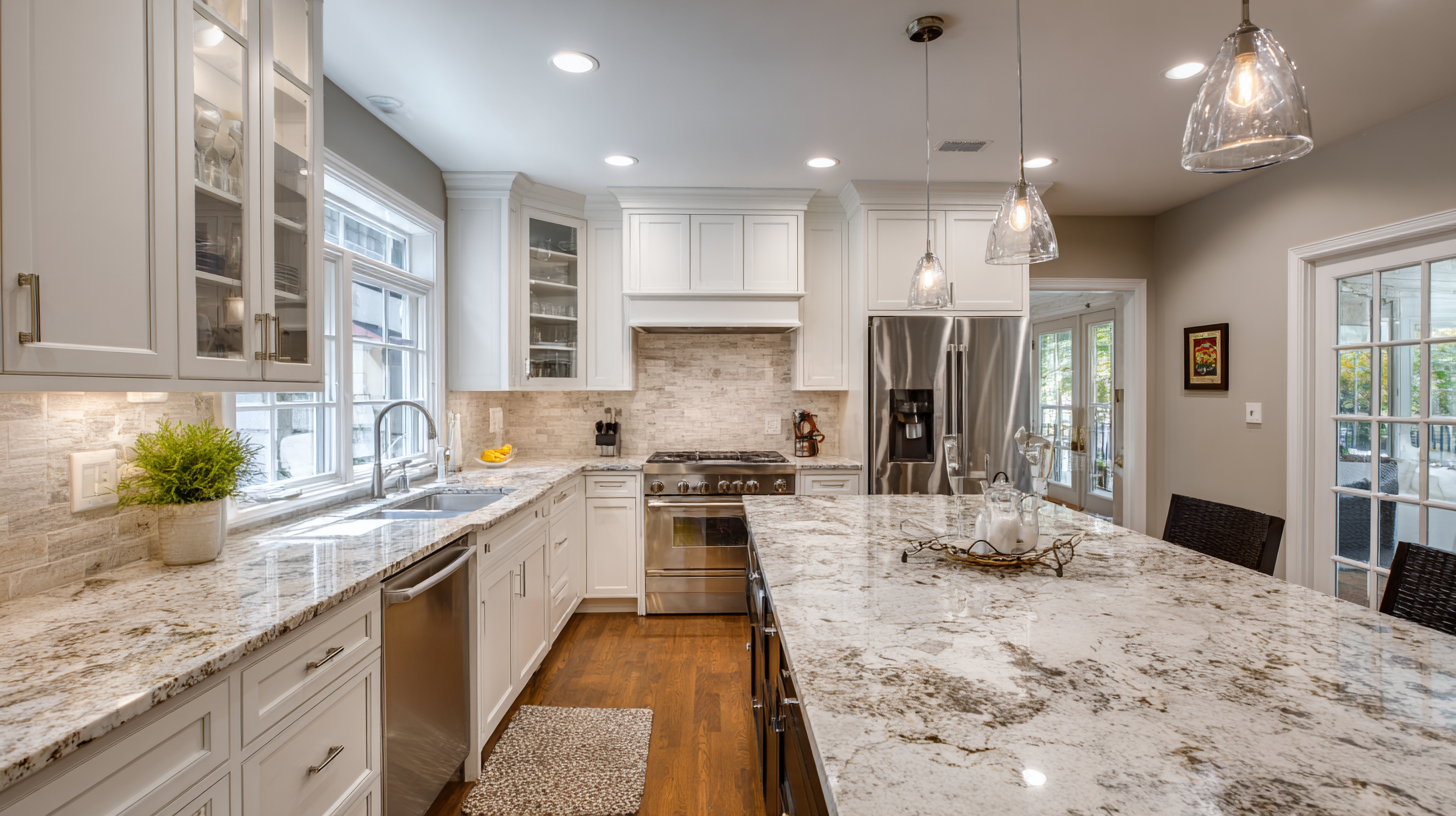
Next, think about how you use your sink daily. In the kitchen, if you frequently prepare large meals, a deeper and wider sink may be beneficial to accommodate pots and pans. Meanwhile, for the bathroom, if you need a sink that can handle everyday essentials, a standard size may suffice. Additionally, consider the configuration—double-basin sinks can be practical for multitasking, while a single basin offers a sleek, modern look. Ultimately, the ideal dimensions and setup will reflect your needs and enhance the overall design of your space.
When selecting the perfect stainless steel sinks for your kitchen and bathroom, one of the most critical factors to consider is balancing quality with cost. According to a report from the National Association of Home Builders, high-quality sinks can last between 15 to 30 years, making them a crucial investment for any home. Opting for cheaper options might save you money upfront, but these sinks typically lack the durability and resistance to scratches and stains that premium-grade products offer. Investing in a quality sink can reduce replacement costs over time, reinforcing the importance of thorough budgeting in your selection process.
When creating your budget, it’s essential to account for the long-term value of your purchase. A survey by HomeAdvisor indicates that consumers are willing to invest an average of $250 to $600 for a stainless steel sink, but this figure varies based on the gauge and finish. A lower gauge provides better durability, and while you might spend a bit more initially, choosing a 16-gauge sink over a 22-gauge option can enhance your sink’s lifespan and performance. Therefore, carefully weighing the initial cost against longevity and functionality can result in better satisfaction with your investment in the long run.
| Tip | Description | Budget Consideration |
|---|---|---|
| 1. Material Thickness | Opt for sinks with a thickness of 16-18 gauge for durability and resistance to dents. | Higher gauge sinks may cost more but offer better quality. |
| 2. Finish Type | Choose between brushed, polished, or satin finishes based on your kitchen style. | Finishes can affect price; brushed finishes may be more affordable. |
| 3. Size and Depth | Select a size that fits your countertop and meets your usage needs. | Larger sinks can be pricier; measure your space carefully. |
| 4. Shape | Consider round, square, or rectangular designs based on aesthetics and functionality. | Shapes with unique designs can cost more; choose wisely. |
| 5. Drain Placement | Choose a sink where the drain is conveniently located for plumbing. | Custom drain placements may increase installation costs. |
| 6. Noise Reduction | Look for sinks with sound-deadening pads to minimize noise when using. | These features may slightly raise the sink price. |
| 7. Warranty | Check the warranty duration to ensure longevity and manufacturer confidence. | Longer warranties may indicate higher quality but can vary in cost. |

